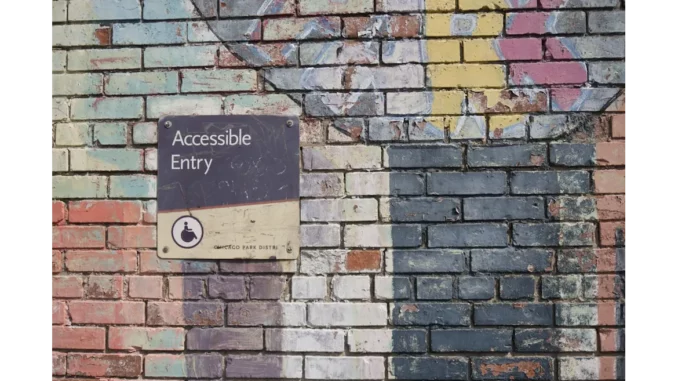
Inclusion and accessibility are fundamental values that should be embraced in the realm of sports. Sports venues serve as pivotal spaces for bringing communities together and fostering a sense of belonging. However, for individuals with disabilities, attending live events at stadiums can present considerable challenges due to accessibility issues.
Focus360 Energy: property compliance services – pre-planning to post-construction. Learn more.
Recently, I had the opportunity to converse with Michael Turner, a fervent advocate for accessibility in sports venues and the current Accessibility Consultant for several major stadiums across the UK. Our discussion illuminated the complexities of legal requirements for accessibility in stadiums and venues, the measures that can be taken to improve these spaces, and the success stories of venues that have excelled in this domain.
“The legal framework for accessibility in sports venues is comprehensive but often falls short in practical application,” Michael began. “The Equality Act 2010 mandates that all public venues, including sports stadiums, must make reasonable adjustments to ensure they are accessible to disabled individuals. This includes provisions for seating, restrooms, parking, and other facilities. However, the interpretation of ‘reasonable adjustments’ can vary significantly from one venue to another.”
Michael highlighted that while legal requirements serve as a necessary foundation, they are often perceived as the minimum standard rather than an aspirational goal. “Many stadiums see compliance as a box-ticking exercise. They meet the letter of the law but not the spirit,” he explained. “True accessibility goes beyond just having a few designated seats for wheelchair users. It encompasses the entire experience from the moment a fan enters the stadium to when they leave.”
One of the critical measures Michael underscored is the importance of inclusive design from the outset. “When new stadiums are being planned, accessibility should be a core consideration, not an afterthought. This means integrating features like accessible seating that offers the same sightlines as other seats, proper signage in braille, hearing loops for those with hearing impairments, and adequate parking facilities close to the entrance.”
Michael also emphasised the necessity of staff training. “All staff, from ticket sellers to ushers, should be trained in disability awareness. They should know how to assist individuals with various types of disabilities in a respectful and effective manner. This training can make a significant difference in the overall experience for disabled fans.”
In discussing improvements, Michael was enthusiastic about technological advancements that could enhance accessibility. “Mobile apps that provide real-time information on accessible routes within the stadium, virtual reality tours for fans to familiarise themselves with the layout before they arrive, and even smart seating solutions that adjust to individual needs are all exciting developments.”
While challenges remain, there are notable success stories worth celebrating. Michael recounted his experience working with the Tottenham Hotspur Stadium, which has been lauded for its inclusive design. “Tottenham Hotspur Stadium is a beacon of accessibility. They have incorporated over 250 accessible seats, adjustable-height counters, and a sensory suite for fans with autism. This level of commitment to inclusivity sets a new standard for other stadiums to follow.”
Another commendable example Michael shared was the work done by the Principality Stadium in Cardiff. “They’ve invested significantly in making the stadium accessible, including installing lifts, accessible toilets, and having a comprehensive accessibility guide available for fans. These measures have made a tangible difference in the fan experience.”
However, Michael was quick to note that smaller venues often face more significant challenges due to budget constraints. “It’s easier for larger, well-funded stadiums to implement extensive accessibility features. Smaller venues need support, whether through grants, subsidies, or shared resources, to make necessary improvements.”
As our conversation drew to a close, Michael left me with a thought-provoking insight. “Accessibility is not just about meeting legal requirements; it’s about recognising and valuing every fan’s right to participate in and enjoy the sports they love. It’s about creating an environment where everyone feels welcome and included.”
While legal requirements provide a crucial baseline for accessibility in UK sports stadiums and venues, there is a pressing need for a more holistic approach. By considering inclusive design from the beginning, investing in staff training, leveraging technological advancements, and supporting smaller venues, we can move towards a future where accessibility is not just an obligation but a celebrated standard. As Michael Turner aptly put it, “The goal should always be to create a truly inclusive environment that goes beyond mere compliance.”


Be the first to comment